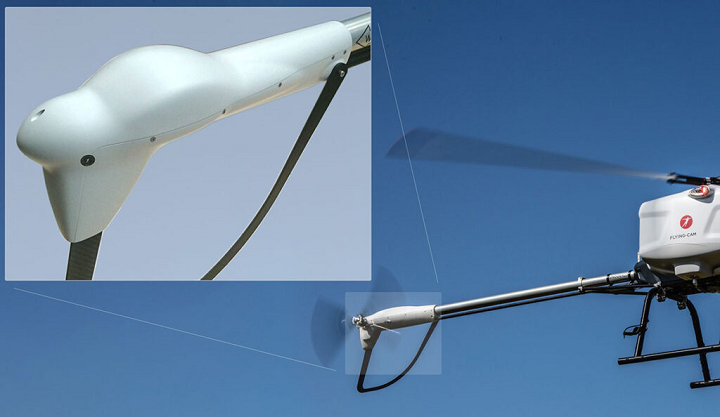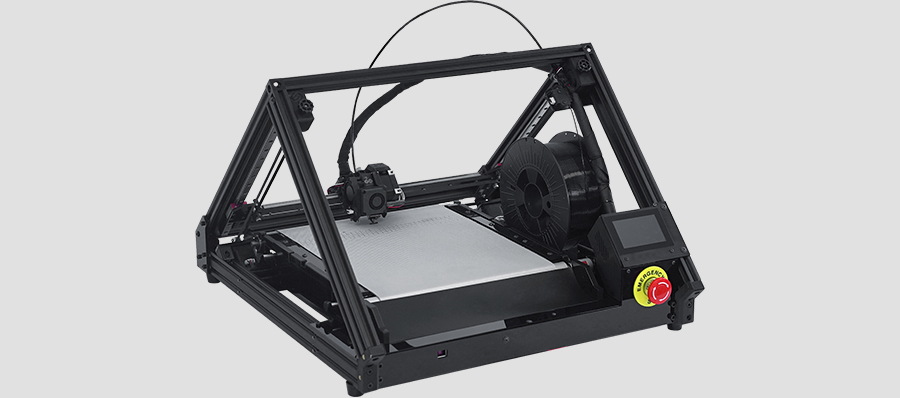America Makes has announced its new Executive Committee members, and PUNCH Torino and Roboze are partnering up to increase the adoption and improve the process of FFF 3D printing. Those are the stories kicking off our 3D Printing News Briefs today, and then we continue with business, as iFactory3D has launched its automated belt 3D printing technology. FLYING-CAM is working with CRP Technology to create a flight-ready part for its super drone, and Gogo Business Aviation called on Quickparts for rapid prototyping. Finally, discarded cigarette butts are being turned into 3D printing material in a great example of the circular economy.
America Makes Announces New Executive Committee
America Makes is now in its tenth year, and its Executive Committee will be helping to lead the program into its next phase by serving as the main strategic advisory committee. America Makes recently elected new members of its Executive Committee, who will advise on matters relating to membership value, education and training, ecosystem and partnership strategies, and technical scope, as well as ensuring that the proper advocacy, policy, and strategy are in place in order to achieve the institute’s mission. The government representatives are Shawn Moylan, Mechanical Engineer and Project Leader at the National Institute of Standards and Technology (NIST); Beth Ripley, Deputy Chief, Office of Healthcare Innovation and Learning at the US Department of Veterans Affairs; and Rick Russell, NESC Technical Fellow for Materials, NASA. The newly elected members of the 2022-2023 America Makes Executive Committee are:
- Rachel Andrulonis, Director, Advanced Materials Research, National Institute for Aviation Research at Wichita State University
- Edward D. Herderick, Director, Additive Manufacturing at The Ohio State University Center for Design and Manufacturing Excellence
- Stephanie Gaffney, Director, Advanced Manufacturing Programs, Youngstown Business Incubator
- Brian Meincke, Vice President, Global Business Development and Innovation Strategy, ASTM International
- Melanie Lang, CEO, FormAlloy
- Nicholas Mule, Director, Additive Manufacturing, Boeing
- Brian Rosenberger, Senior Technical Fellow, Lockheed Martin
- Zach Simkin, President, Senvol
PUNCH Torino & Roboze Sign Agreement for AM Development
In an effort to speed up the development and industrialization of additive manufacturing for the automotive and marine industries, Italian advanced manufacturing companies Roboze and PUNCH Torino have signed an agreement to increase adoption of the technology, as well as improve the FFF 3D printing process to make it more sustainable and competitive. PUNCH Torino specializes in design and development of propulsion systems, and has gained strong AM skills since 2015, when it started develop these capabilities for the automotive industry. For its part, Roboze will deploy its Automate technology, which was developed for its Production systems, including the precise and repeatable ARGO 500, which enables the replacement of metals with super polymers like Carbon PA and PEEK. From an economic perspective, implementing AM will reduce time and costs of product development and manufacturing, with the possibility of digitizing warehouses. Additionally, bringing production to the point of use will welcome skills and job opportunities.
“We chose Roboze as our partner because we strongly believe in its patented ultra-precise 3D printing technology for super polymers and composites, which will allow us to replace metal alloys within the entire lifecycle of automotive and marine functional components, thus reducing the overall weight of the powerpack system and the related Co2 emissions, which we know to be increasingly stringent and challenging. This technology allows us to create increasingly complex, resistant and functionally integrated systems through the application of specific product development techniques for additive manufacturing,” said Gianmarco Boretto, Director Hardware Engineering of PUNCH Torino.
iFactory3D Launches Belt Technology for Automated 3D Printing
German AM company iFactory3D, just founded two years ago, has announced the launch of its belt 3D printing technology, which will help to automate the additive manufacturing process. While 3D printing can be less tedious, wasteful, and expensive than traditional manufacturing, it does have constraints with size and batch automation. iFactory3D’s One Pro belt system will help to bridge these gaps for the production teams of business in Europe and the United States. The company has spent four years tweaking its initial prototype, and used client and industry expert input, along with excellent industry-standard components, to develop the final printer, which uses automated leveling and a conveyor belt as the build plate to print long objects and geometries with 45° angles.
“I remember in 2018, I needed a larger quantity of long components for a specific project, but I was unable to do so with the limited space provided in regular 3D printers, and it wasn’t cost-effective to place an injection molding order for just a couple of hundred parts for development. I had to create an enhanced printer to perform the task,” explained Martin Huber, the Co-Founder and CTO of iFactory3D. “We made the 3D belt printer available to the public because we wanted to provide countless businesses worldwide the opportunity to manufacture their products affordably.”
FLYING-CAM & CRP Technology 3D Printing Part for Super Drone

Detail of Discovery’s tail rotor gear box housing manufactured by CRP Technology in Windform® XT 2.0 material. Courtesy of FLYING-CAM
Belgian company FLYING-CAM, a global leader in designing and manufacturing unmanned helicopters and a pioneer in professional drone filming services, worked with CRP Technology to finish the construction of its newest and most versatile unmanned aircraft system (UAS), the Discovery. The “super drone” is a 75 kg Maximum Take-Off Weight (MTOW) unmanned single rotor helicopter, with integrated sensors for multiple filming applications. The drone needed rigid, yet lightweight physical and aerodynamic protection for its GPS antenna and tail rotor actuators, and CRP Technology used its selective laser sintering (SLS) technology and proprietary Windform XT 2.0 carbon fiber-filled polyamide composite to print a flight-ready, tail rotor gear box housing, which attaches to the main tail boom of Discovery and also supports the carbon plate used as tail rotor ground protection.
Emmanuel Previnaire, Founder and CEO of FLYING-CAM, said, “The most innovative aspect in enlisting the 3D printing process with Windform by CRP Technology, is the free shape design, which is important for aerodynamic purpose, as well as the ability to create complex, functional parts such as wiring channels inside with strong attachment point, in one unique piece. This is a very added-value that perfectly suited our purposes and standards.”
Gogo Business Aviation Uses Quickparts for Rapid Prototyping
Gogo Business Aviation, the world’s largest provider of broadband connectivity services for business aviation, turned to Quickparts when it needed a realistic prototype antenna for a major product announcement at a trade show in one week’s time. The real product is not only smaller and more lightweight than the average satellite antenna for inflight Wi-Fi connectivity, but it also has a lower profile than any other on the market. But even thought the piece was small, Gogo could only find one 3D printing company that could print it as a single, high-quality piece and paint it in one week, and that was Quickparts, which suggested stereolithography (SLA) 3D printing to speed up production and achieve a show-ready part.
Brandon Fichera, Senior Mechanical Engineer at Gogo Business Aviation, said, “Every other 3D printing company told me it was too big and would have to be printed in multiple pieces, would have a layer thickness that wouldn’t be smooth enough to work as a concept model showpiece, or the lead time to get printed would cause us to miss the trade show.
“Quickparts was able to handle a large, 3D print with a nice, high-gloss paint finish, in a highly compact time schedule. We really appreciate the work that went into helping this all come together within one week.”
Recycling Cigarette Butts into 3D Printing Material in Estonia
Finally, the North Tallinn municipality in Estonia found a unique way to celebrate Baltic Sea Day. In a two-month-long pilot project, special trash cans were installed in which smokers could dispose of their cigarette butts, which will then be turned into compostable 3D printing material. These non-biodegradable butts are one of the most widespread types of marine litter in the Baltic Sea, and just one can poison up to 1,000 liters of water, while toxins released from them into the water can remain for up to 16 years, which is deadly to aquatic life. The municipality’s administration helped choose the locations of the 20 trash cans, which have been placed at several beaches and promenades. At the end of the pilot, a team will evaluate whether cigarette butt pollution on the beach and in the waters has been reduced, and if so, more special cans will be purchased and installed in the seaside and riverside areas of Tallin.
“Every year, almost 80 tons of cigarette filters end up in nature. They do not decompose, and the toxic substances contained in them once again end up in the arc through marine animals and into the human diet,” said Deputy Mayor Joosep Vimm. “I hope that the special cigarette butt cans will help reduce the generation of this widespread marine litter.”
Subscribe to Our Email Newsletter
Stay up-to-date on all the latest news from the 3D printing industry and receive information and offers from third party vendors.
You May Also Like
Gorilla Sports GE’s First 3D Printed Titanium Cast
How do you help a gorilla with a broken arm? Sounds like the start of a bad joke a zookeeper might tell, but it’s an actual dilemma recently faced by...
Nylon 3D Printed Parts Made More Functional with Coatings & Colors
Parts 3D printed from polyamide (PA, Nylon) 12 using powder bed fusion (PBF) are a mainstay in the additive manufacturing (AM) industry. While post-finishing processes have improved the porosity of...
$25M to Back Sintavia’s Largest Expansion of Metal 3D Printing Capacity Since 2019
Sintavia, the digital manufacturing company specializing in mission-critical parts for strategic sectors, announced a $25 million investment to increase its production capacity, the largest expansion to its operations since 2019....
Velo3D Initiates Public Offering in a Bid to Strengthen Financial Foundations and Drive Future Growth
Velo3D (NYSE: VLD) has been among a number of publicly traded 3D printing firms that have attempted to weather the current macroeconomic climate. After posting a challenging financial report for 2023,...




































